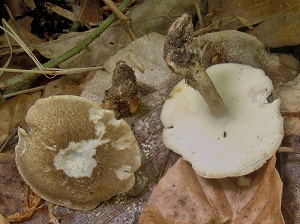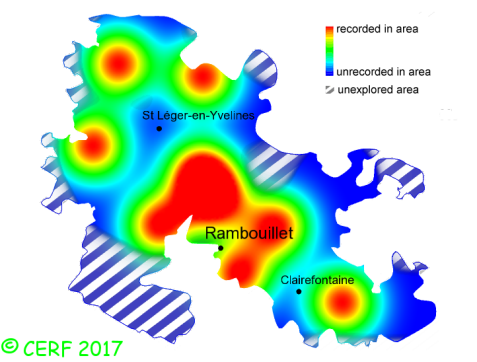| Polyporus ciliatus Fr. |
|
|
|
|
|
|
The cap is ochre-brown to grey-brown, sometimes quite pale, tough or rubbery, circular-convex then quickly flat, finally slightly depressed and possibly umbonate. The cap surface is downy to felty-scaly, sometimes arranged in concentric bands. The cap margin is inrolled then fringed and finally wavy with age. The flesh is white, elastic or tough; its taste is mild; the odour is pleasant; The tubes are whitish to cream or tawny, slightly decurrent, very short (0,5 to 2mm). The pores are very small (5 to 6 per mm), white to ochre, round. The spore print is white. It grows in broad-leaved woods, on stumps or dead branches (rare on conifers). The fruiting period takes place from April to September.
Distinctive features : rubbery to tough; cap slightly hairy at the margin; spring species; very small white pores Polyporus ciliatus is quite rare and scattered in the forest of Rambouillet, and is occasional, more generally speaking . | ||
|
page updated on 14/01/18

